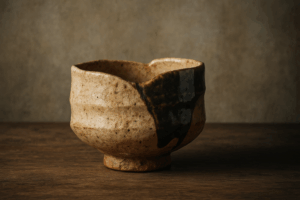🎥 The Boundaries Between AI and Human Spatial Perception— How Video Generation AI Is Transforming Music Video Production —
🎥 The Boundaries Between AI and Human Spatial Perception
— How Video Generation AI Is Transforming Music Video Production —
By Phantom Tone | Kotetsu Co., Ltd.

Even though video generation AI has advanced at a breathtaking pace, its understanding of the space we live and move in remains remarkably shallow. In music video production, this gap between AI’s statistical vision and human embodied perception becomes strikingly visible.
■ When AI “Sees” the World, It Doesn’t Understand It
Ask an AI to create a shot of a horse galloping across a field while the camera circles around it, and you’ll see the problem immediately: The horse melts, shadows flicker, or even a mysterious “fourth horse” appears mid-scene.
That happens because current AIs—such as Sora, Runway, Pika, or Kling—don’t actually build 3D space. They merely predict the next frame based on visual continuity. To AI, space isn’t geometry; it’s just a probability field that happens to look coherent for a few seconds.
■ Human Spatial Awareness: Experience as Coordinates
Humans perceive space through embodied experience. When a camera pans left, your brain instinctively compensates, updating your internal map of distance, direction, and lighting. Every good director or cinematographer subconsciously relies on this constant recalibration of the body in space.
That’s why human-shot footage feels consistent—because it’s guided by an understanding of where we are, not just what we see.
■ AI’s Spatial Perception: Calculated Vision Without Presence
In contrast, AI perceives the world statistically. It “knows” that similar pixels tend to appear next, but it doesn’t know that a dancer occupies a fixed point on a stage. So when the camera moves, the stage may warp, a dancer may vanish, or a new one may spawn out of nowhere.
This reveals a deeper truth: current AIs lack object permanence—the ability to remember that something continues to exist even when it’s temporarily out of view.
■ Working With AI: Think Painter, Not Camera
Treating AI as a camera will frustrate you; treating it as a painter will liberate you.
In human filmmaking, the camera captures an event. In AI filmmaking, the AI imagines an event—reconstructing it frame by frame like brushstrokes on a canvas.
🎬 Shifting Mindsets in Production
Structure: Conventional → Designed around camera motion.
AI Approach → Construct the world per scene, not per lens.
Shooting: Conventional → Movement + camera choreography.
AI Approach → Symbolic, fixed compositions that express atmosphere.
Editing: Conventional → Connect moments on a timeline.
AI Approach → Reconstruct a sense of space from individual scenes.
Direction: Conventional → Physical logistics and realism.
AI Approach → Poetic coherence of light, color, and motion.
■ The Future: When AI Builds Its Own 3D World
The next wave of AI models is already learning to construct internal 3D scenes before rendering. Projects like OpenAI’s Sora 2, Google’s Genesis, and Meta’s 3D-DiT integrate scene graphs, camera paths, and light sources inside their neural architecture.
Once these mature, we’ll witness a genuine shift—from AI that paints moving pictures to AI that directs within virtual physics.
“AI will stop predicting frames and start remembering worlds.”
■ The Poetics of Space: Human Touch in an Artificial World
For humans, space is lived—walked, turned, breathed in. For AI, space is still a reconstruction, a calculated dream stitched from data.
And yet, that dream grows clearer every month. The ambiguity of AI’s spatial vision can itself become an artistic tool—creating surreal, impossible camera motions and ghostly, poetic imagery that no human rig could achieve.
Until AI truly understands space, human perception remains the compass connecting sound and image, rhythm and light, reality and imagination.
🎧 Produced by: Phantom Tone | Kotetsu Co., Ltd.
Genre: Japanese Ritual Hip-Hop / AI Generated Music
Website: ishipos.com/phantomtone/
🇯🇵 日本語フィード(サブ)
AIはまだ「世界を理解している」とは言えません。 映像生成の内部では、空間は確率的なつながりにすぎず、 カメラが回るたびに物体が歪んだり、人数が増えたりする。 それはAIが“空間”を実体としてではなく“計算結果”として扱っている証です。
しかし、Sora や Genesis のような新世代モデルでは、 AIが内部で3D構造を構築し、光源やカメラパスを保持する方向に進んでいます。 やがてAIは、Blenderのように世界を“設計してから描く”存在へと進化するでしょう。
その日まで、音と映像を結ぶ羅針盤は―― やはり人間の感覚です。
Tags:
#AImusic #AIvideogeneration #MusicVideo #SpatialPerception #Sora #Runway #Blender #Kotetsu #PhantomTone #AIart


